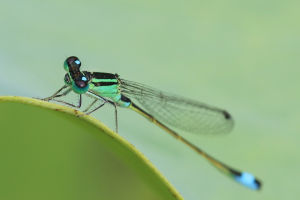The yellow warbler is a medium-sized songbird. The most attractive feature of the yellow warbler is its yellow plumage. The male's plumage is golden yellow, shiny, and very bright, and the female's plumage is yellow-green with a slight greyish tinge.
Juveniles are similar to females but have more dry black feather patterns. Both male and female yellow warblers have black wings and the middle of their tails.
They like to live in flocks and like to walk through the woods in pairs. The yellow warbler flies on warm spring days with its beautiful, graceful body and colorful feathers.
Not only does the yellow warbler have a naturally elegant appearance, but it is also a natural singer.
Its vocal muscles are particularly well-developed. Through the skilful regulation of the vocal muscles by the nervous system, the yellow warbler's song is very beautiful.
The developmental characteristics of individual singing behaviour in the yellow warbler are very similar to the human language learning process.
The function of songs is similar to that of the human language system, with the difference that the singing behaviour of yellow warblers has obvious gender differences and seasonal variations.
Yellow warblers often call in the quiet morning. Male and female yellow warblers connect emotionally and exchange information by singing or singing, while young yellow warblers seek food from their parents by singing.
During the breeding season, male yellow warblers are more active in courtship and showing off, and they sing softly throughout the day with a very magnetic voice.
The yellow warbler is a well-known beneficial insectivorous bird. It often feeds in woodlands, farmlands, and gardens.
Its food is mostly moths and butterfly larvae, crickets, locusts, and other pests.
During the nesting period, the yellow warbler can destroy more pests. It is said that to feed a brood of chicks, the female catches one to two hundred posts per day, so yellow warblers are beneficial birds.
Some people go to great lengths to catch yellow warblers and try to keep them in their homes. However, newly captured wild warblers often become restless and refuse to eat because they are timid.
Most of them will die of physical exhaustion. Even if they survive after careful hand-feeding and meticulous care, they are still lethargic.
Yellow warblers are very difficult to raise, and it is difficult to raise them successfully without professional skills, so let them stay in nature.


